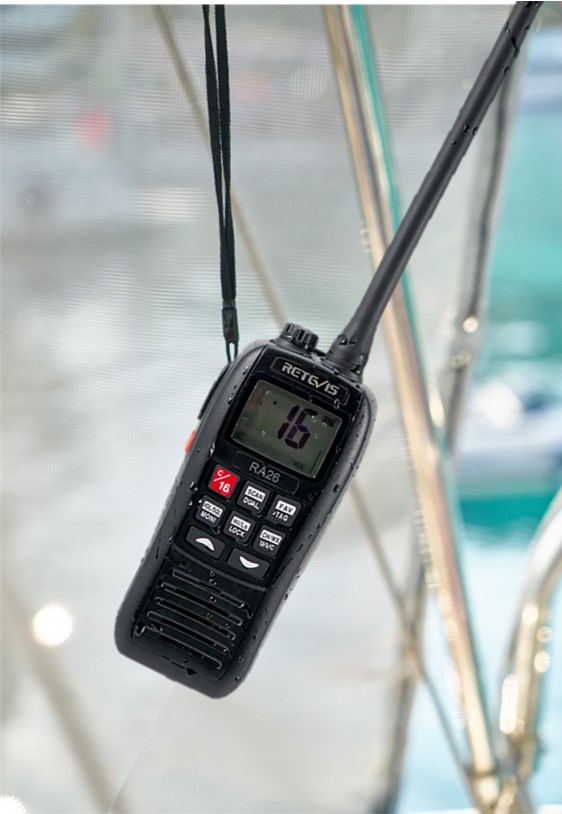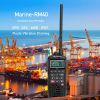What to consider when choosing a VHF marine radio

Radio is an important safety tool for all mariners who venture out on the water, whether offshore or on inland waterways. VHF marine radios are used for a variety of purposes including; contacting harbours & marinas, summoning rescue services or ship-to-shore and ship-to-ship communication.
Knowing what radio to choose can be quite confusing because of the range of models and features available. Here we go through some important considerations when choosing a VHF marine portable of fixed radio?
What do I need a VHF radio for?
Primarily you need it to communicate for safety with the coastguard and other boats and ships.
What types of VHF radio are available?
There are handheld and fixed panel mount radios.
Handheld VHF's are small, portable and suitable for small vessels without their own battery source; or as emergency back-up for fixed radios or as personal radios for crew and use in tenders.
Panel-mount radios are permanent, fixed and ideal as the main radio. They offer greater range than a handheld because of their extra power, generally 25W and external antenna.
What’s best for me?
Look at why you need a VHF radio. If you are a dinghy sailor, jet skier or sea kayaker, space will be an issue and a buoyant waterproof handheld with a long battery life may be desirable for the day long sessions.
A handheld should be straightforward to use under pressure with easy shortcuts, an intuitive user interface and simplicity of operation. A clear screen and a decent battery life are also important.
A DSC Handheld radio will allow you to contact a similarly equipped craft directly by means of a unique MMSI number or to send a distress signal equipped with your identity and location by a simple press of the button.
Moving onto cruiser’s and RIBS’s venturing further out to sea, a small budget fixed radio providing the extra range may be worth considering.
A large motorboat or yacht sailing further offshore, like above, will need greater range so a fixed mount unit will be a better solution. A larger vessel may opt for dual station control with a remote handset. All yacht and motorboats should consider AIS, either receiver only or a class B transponder.
All recent fixed-mount marine VHF radios have DSC calling capability, allowing you to alert other boats, ships and shore stations with the single press of a button. When connected to a GPS, these DSC capabilities include; position polling, a variety of group calling options. Some offer the ability to connect to a remote microphone and act as an inter-ship intercom system.
Some radios also have automated fog horns that connect to an external hailer horn. Some have built-in hailers that act as a public address system.
Fixed radios do require installation, including connection to a power source, VHF antenna and GPS. Although quite straightforward to a DIY enthusiast, help from your BMEEA dealer may be needed. Think carefully before installing. If space is tight, a black box solution may enable you to install a high end radio out of sight, whilst still being able to control the set with a portable handset.
What features do I need?
1. Easy to use?
Most handheld VHF radios offer basic functionality. Others offer extras such as DSC. Higher end features are being developed and integrated in modern fixed and handheld units. It is important to bear in mind that in an emergency you want an easy to use radio that is easy to operate and control.
2. Waterproofing?
Don’t get confused with waterproof values. Submersible (IPX7) is much preferable to something that is only splash proof such as radios which are IPX4.
3. Buoyancy
One of the biggest developments of recent years has been buoyancy technology within handheld radios. So if by accident you drop the radio over the side, it will come to the surface so you can retrieve it. To aid retrieval, some handheld sets have strobe lighting so that they can be seen in the water.
4. ATIS Programmable?
If you are going abroad to the continent, make sure your radio set is ATIS programmable. This can be set up by your supplying dealer.
5. Dual / Tri Watch & Scan
The set you are looking at should have dual or tri watch for scanning between channels whilst monitoring channel 16 as well as a customisable scan function so you can monitor all the channels you need to without missing a call.






